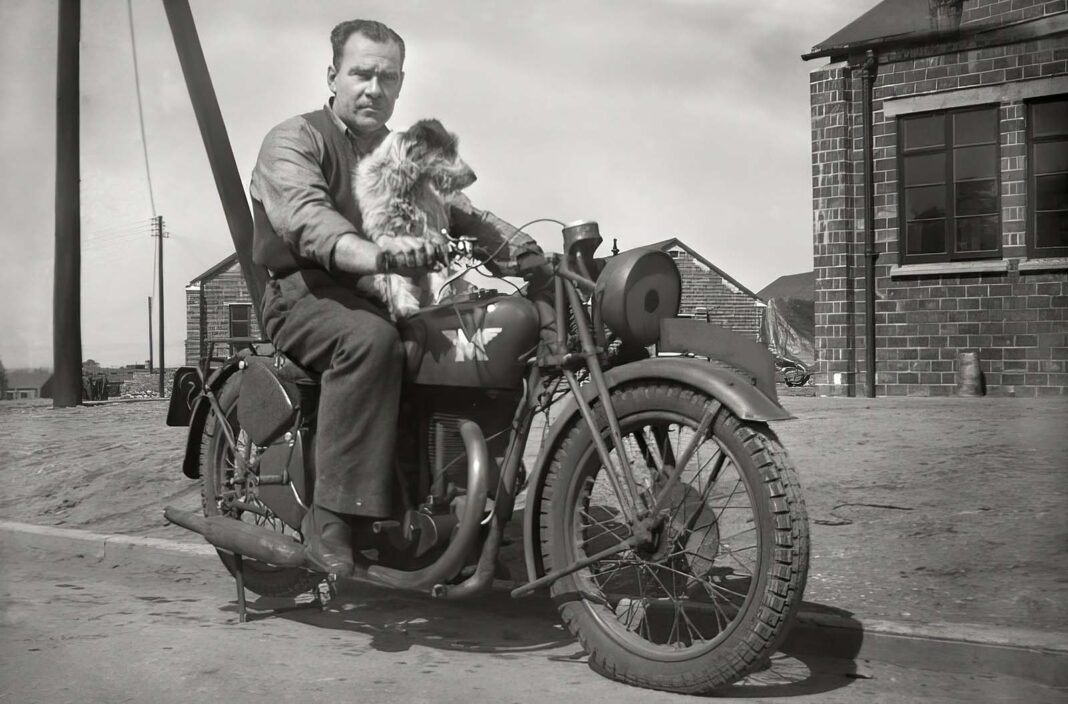Motorcycles have a fascinating origin story rooted in the technological advancements of the 19th century.
Their lineage can be traced back to the “safety bicycle,” which featured equally sized front and rear wheels and a pedal-crank mechanism to propel the rear wheel.
Rather than stemming from a singular invention, the motorcycle’s development was shaped by the parallel efforts of engineers and inventors across Europe during the same period, reflecting a shared vision of mechanized transportation.
The first petroleum-fueled motorcycle, known as the Daimler Reitwagen, was created in 1885 by German inventors Gottlieb Daimler and Wilhelm Maybach in Bad Cannstatt, Germany.
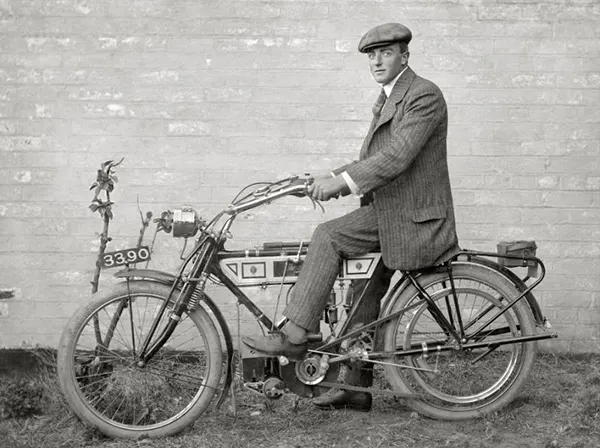
Man a circa 1908 3 1/2 horsepower Bradbury motorcycle, somewhere in Victoria, Australia, circa 1908.
Motorcycles gained significant prominence during the First World War, when their production surged to support military operations.
Dispatch riders on motorcycles replaced horse-mounted messengers, enabling faster communication, reconnaissance, and law enforcement among the troops.
Harley-Davidson, an iconic American company, allocated more than half of its production to military contracts by the end of the war.
Similarly, the British manufacturer Triumph supplied over 30,000 of its Triumph Type H motorcycles to Allied forces, solidifying the motorcycle’s role as a vital wartime asset.
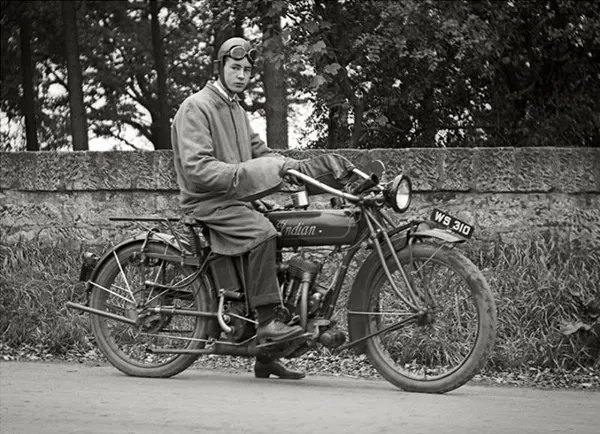
Indian motorcycle, somewhere in Scotland, circa 1915.
By the late 1920s and early 1930s, Germany’s DKW emerged as the world’s leading motorcycle manufacturer.
This series of striking vintage photographs, found and curated by Steve Given, captures individuals proudly posing with their motorcycles between the early 1900s and the 1950s.
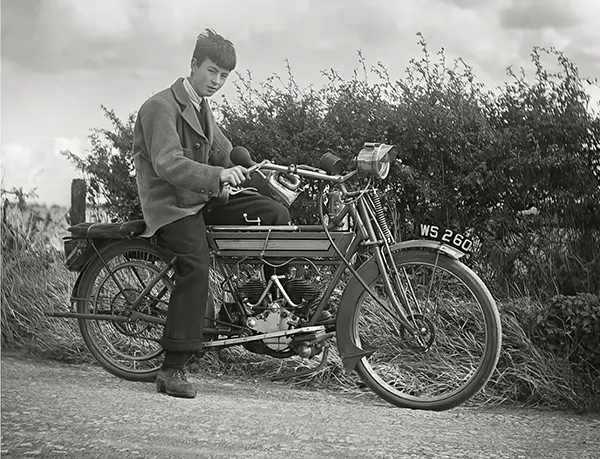
Royal Enfield motorcycle, somewhere in Scotland, circa 1915.
In the 1950s, streamlining became increasingly important in the evolution of racing motorcycles, with the introduction of the “dustbin fairing” offering the potential for revolutionary changes in design.
NSU and Moto Guzzi were at the forefront of this innovation, creating designs that were far ahead of their time.
NSU, in particular, developed the most advanced concepts of the era. However, the deaths of four NSU riders during the 1954–1956 seasons led the company to cease further development and withdraw from Grand Prix motorcycle racing.

Triumph Model H registered in Hertfordshire, circa 1916.
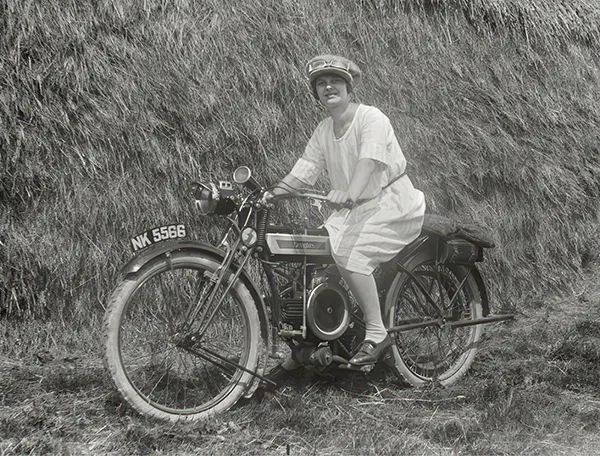
Damsel on a Douglas motorcycle, somewhere in England, circa 1920s.
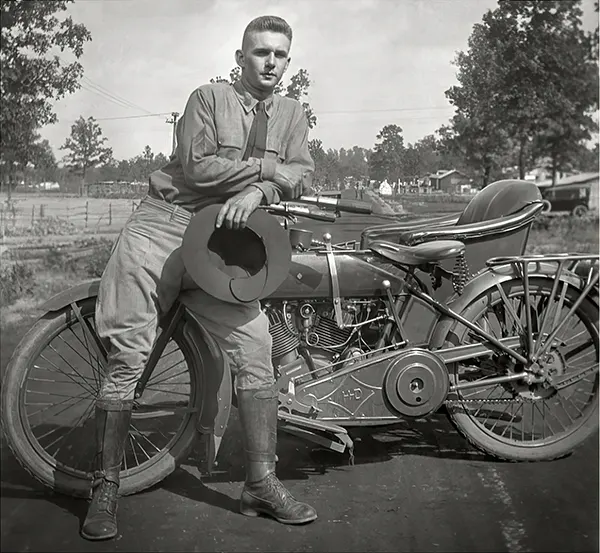
Harley-Davidson motorcycle and sidecar, circa 1920s.
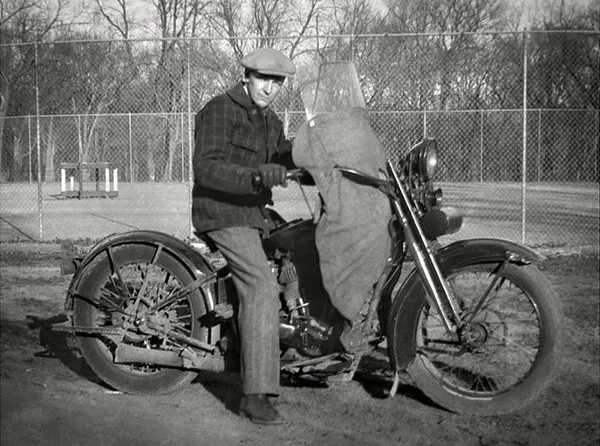
Man on a Harley-Davidson motorcycle, circa 1920s.
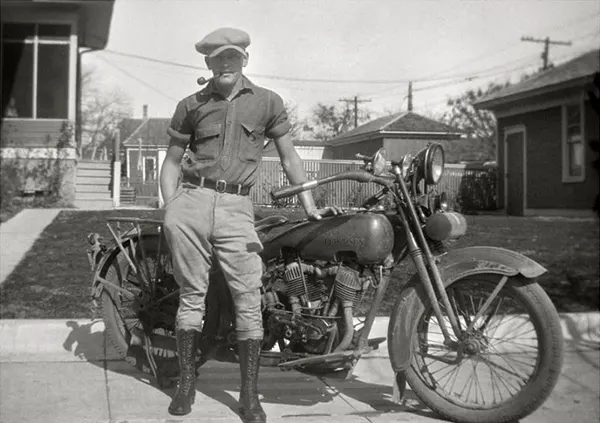
Man with his Harley-Davidson, circa 1920s.
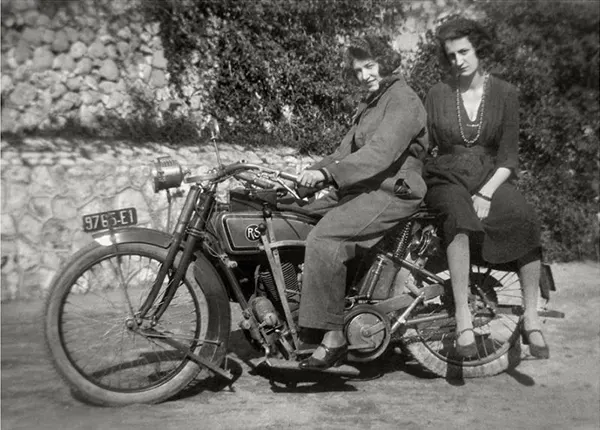
Reading Standard 1200cc V-twin 18hp 1921 model. The registration number is from Paris, France, circa 1921.
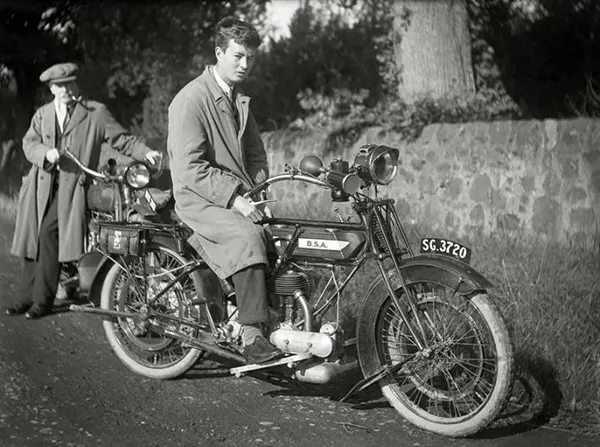
BSA motorcycle, somewhere in Scotland, 1922.
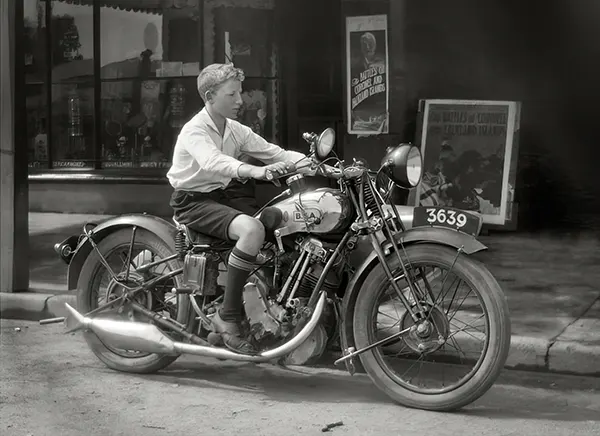
A young lad tries a BSA motorcycle for size in Melbourne, Victoria, 1927.
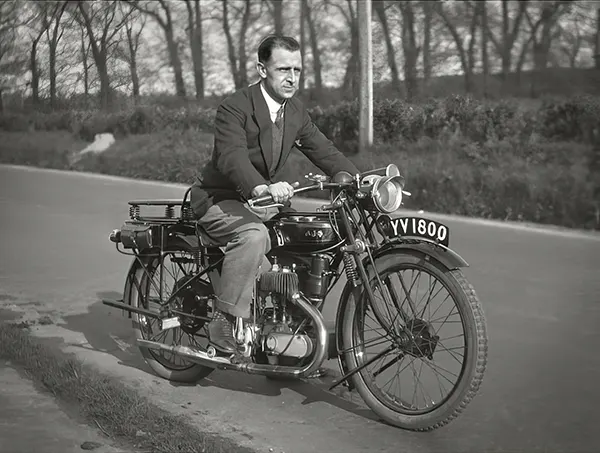
AJS motorcycle at Wroxham, Norfolk Broads, England, 1929.

BMW R2 single cylinder motorcycle, somewhere in Germany, circa 1930s.
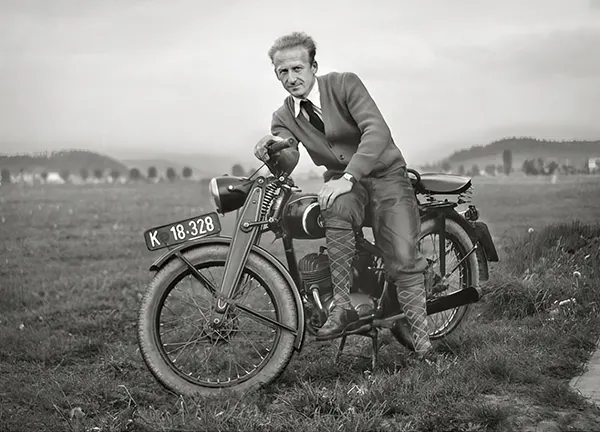
Puch motorcycle and rider, somewhere in Austria, circa 1930s.
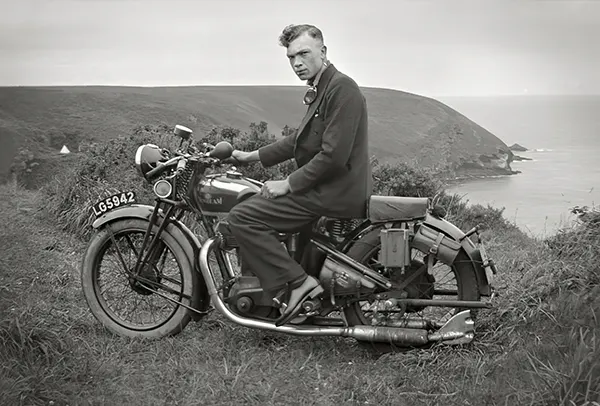
Sunbeam 9/90 500cc OHV registered in Cheshire, UK, circa 1930-31.
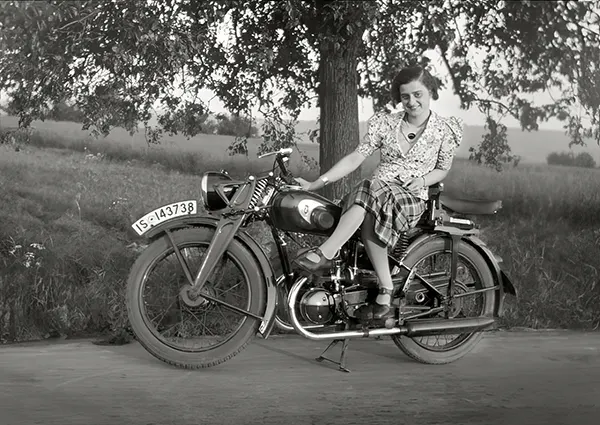
Zündapp motorcycle, somewhere in Germany during the 1930s.
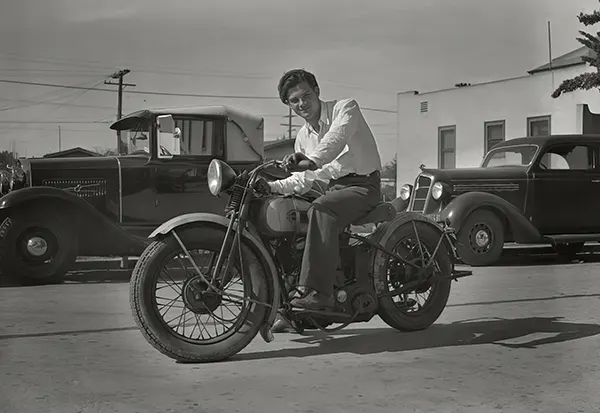
Harley-Davidson, circa 1936.
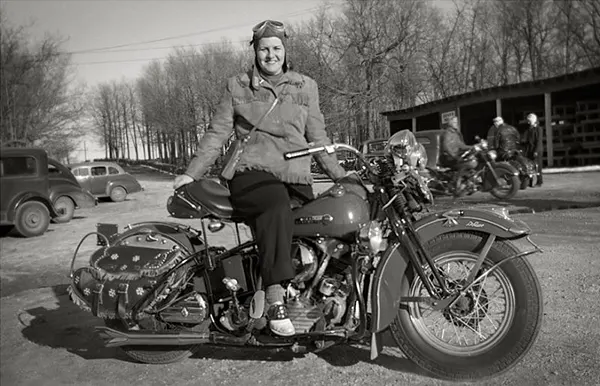
A Harley-Davidson and rider, somewhere in Wisconsin, circa 1940s.
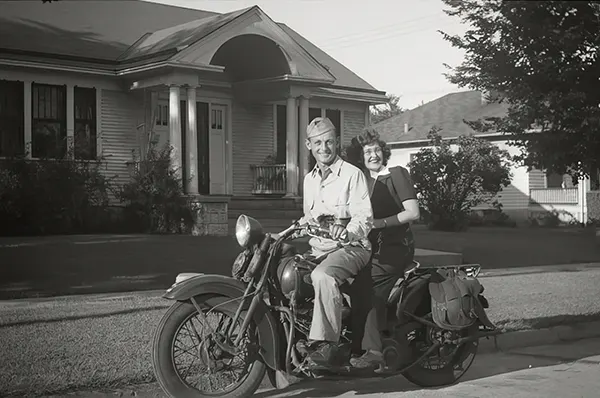
Couple on a Harley-Davidson motorcycle, circa 1940s.

Couple on a Triumph motorcycle, circa 1940s.
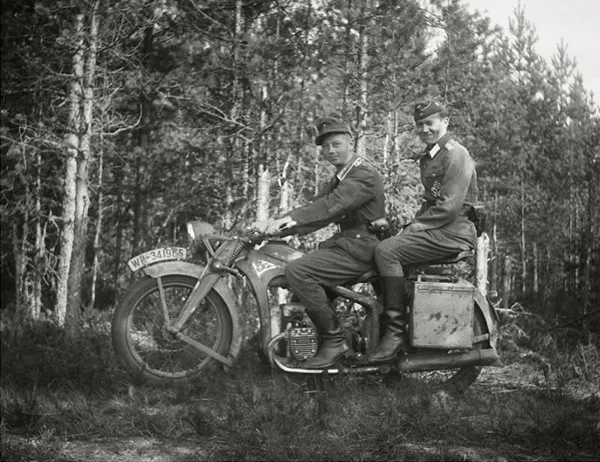
German soldiers on a Zündapp motorcycle during WWII.
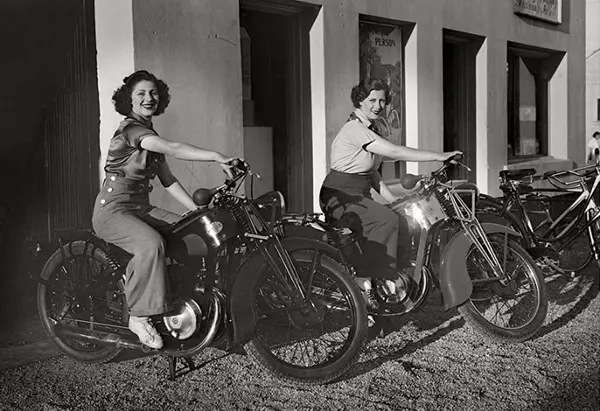
Ladies on Meister motorcycles, circa 1940s.
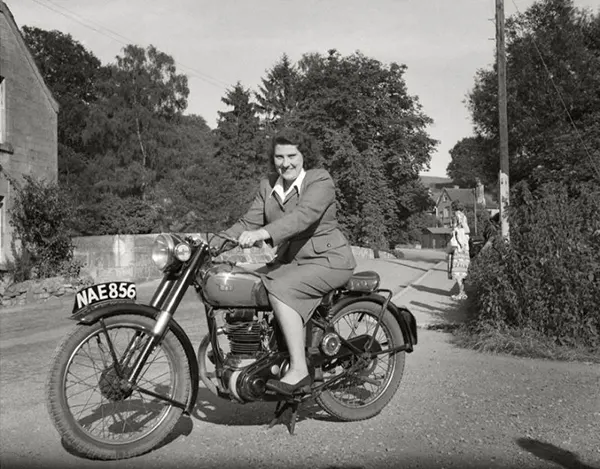
BSA motorcycle in England, 1947.
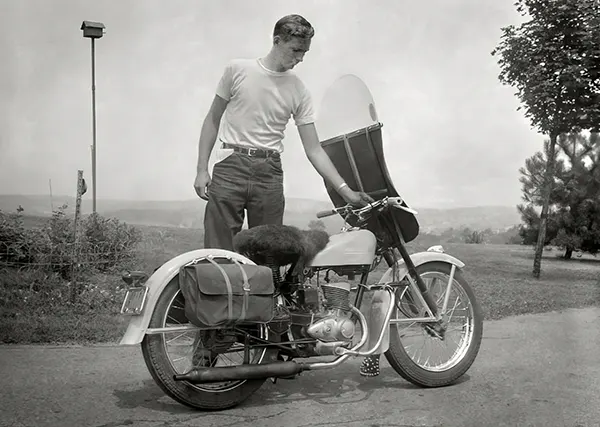
Puch motorcycle and rider, somewhere in Austria, 1951.
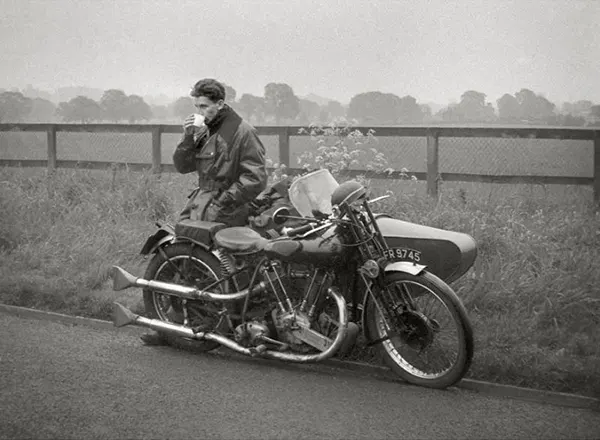
Brough motorcycle and sidecar, on the Isle of Man, 1955.
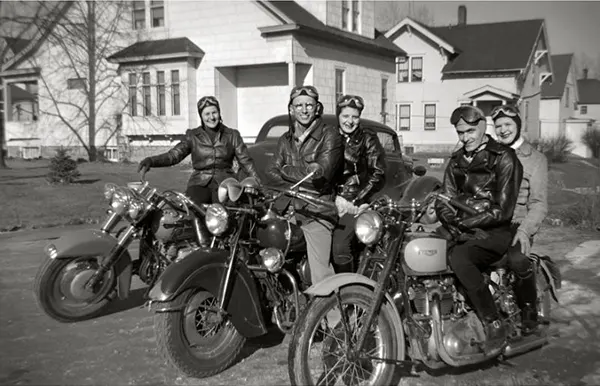
A team of motorcycles and riders, including a Triumph, Indian and Harley-Davidson, somewhere in Wisconsin, circa 1950s.

Father holding his child on a Pannonia motorcycle and sidecar, somewhere in Hungary, circa 1950s.
(Photo credit: Steve Given via Flickr).
